Linda Miller
"I pledge to do all I can to protect Mother Earth from the negative human and environmental impacts she is facing."
POINTS TOTAL
- 0 TODAY
- 0 THIS WEEK
- 921 TOTAL
participant impact
-
UP TO14poundsfood waste prevented
-
UP TO1.0Carbon FootprintCalculated
-
UP TO30pounds of CO2have been saved
-
UP TO1.0energy auditconducted
-
UP TO29pieces of litterpicked up
-
UP TO1.0waste auditconducted
-
UP TO714gallons of waterhave been saved
-
UP TO1.0water footprintcalculated
-
UP TO2.0community eventshosted or attended
-
UP TO1.0treeplanted
-
UP TO10minutesspent outdoors
-
UP TO100minutesspent learning
Linda's actions
Land + Forests
Borrow Before I Buy
Why buy something I will only use once or a few times if someone nearby has it for me to borrow, and why not share something I have that someone may only need a few times a year? To reduce my consumption and waste, I will create or support the sharing economy with friends, family, colleagues or neighbors.
Climate + Air
Sustainability Lunch and Learn
Learning in a social setting can inspire connection and change. I will work with a friend or colleague to plan and host a lunch and learn at work, school, in my neighborhood or other location to learn more about an environmental topic important to me. After the lunch and learn, I will share more about it on the feed.
Climate + Air
Consume only Needs vs Wants
The more stuff we consume, the more greenhouse gasses we put into the atmosphere. I will adopt a "Needs Vs. Wants" approach this month and only buy things I need.
Biodiversity + Wildlife
Save the Bees
Bees are vital to ecosystems. To help save the bees, I will learn which local flowers provide nectar and plant them in my backyard or in a pot on my balcony.
Freshwater + Oceans
Low Water Gardening
Grass lawns are water-intensive and on average require about 30 percent of a household’s water consumption. Native plants are water-efficient and help maintain the balance and diversity of local ecosystems. I will plant native species with water-efficient plants to conserve water and improve the habitat, then post a photo on the feed to share.
Freshwater + Oceans
Reduce Pollutants in Cleaning
Understanding cleaning product ingredients and their effect on water and biodiversity is helpful to our consumer choices. I will spend 5 minutes learning about how cleaning products affect our water and try making my own cleaning products to reduce pollutants.
Freshwater + Oceans
Understand My Water Footprint
Each of us has a water footprint, directly linked to our daily activities as well as the water required in the production of things we use each day. Understanding our water use is important for a healthy planet. I will calculate my water footprint and look for a few ways I can reduce consumption or waste, then share what I learned on the feed.
Freshwater + Oceans
Join a Cleanup Effort
I will organize or participate in a trash pickup at a local river, beach, or natural body of water.
Land + Forests
Explore My Area
When we explore natural spaces around us, our connections with them change. I will spend 10 minutes exploring a new area around my neighborhood, office, or campus (e.g., park, water body, nearby trail, community garden, green space, etc.).
Land + Forests
Choose Eco-Friendly Wood and Paper
Trees provide food and habitat for local wildlife species, shade our streets and homes, and help keep our air and water clean by capturing pollutants. Buying products that help protect forests makes a difference. I will only purchase wood, furniture, and paper products from ecologically certified sources such as Forest Stewardship Council.
Land + Forests
Personal Waste Audit
The waste we create daily can go unnoticed. I will track the waste I create in a day and post a photo log on the feed to see how much I create and where I can make different choices to reduce my waste going forward.
Land + Forests
Zero Waste Day
The impacts of our waste are far reaching. I will create zero waste for an entire day and share my reflections and learnings on the feed.
Land + Forests
Keep My Community Clean
At times it may not feel like it's up to us to keep our community clean and healthy, but we all have a role to play. Each day I am outside, I will pick up any litter I see.
Land + Forests
Plant Trees
Trees capture carbon and produce oxygen that is essential to life on earth. I will support this important piece of nature by organizing or joining a community group to plant 1 native trees in my community, public parks, office location, campus or backyard.
Climate + Air
Low Carbon Diet
Carbon is emitted into the atmosphere in a variety of ways, including through the foods we eat and food we waste. I will learn about low carbon foods and replace higher carbon foods with them in my diet.
Climate + Air
Declutter My Home Without the Landfill
Each day, I will learn about responsible ways to dispose of items and de-clutter, clean, donate, repurpose or recycle unneeded items in my home to make sure that what I get rid of doesn't go into the landfill.
Climate + Air
Weekly Meal Planning
One third of all food produced worldwide is wasted, and so is the energy it takes to produce and transport that food. I will reduce food waste and save money by planning a weekly menu, only buying the ingredients I need and eating what I planned each day.
Climate + Air
Choose Renewable Energy
Renewable energy options are becoming more widespread and accessible. Not only are they good for the planet, they can help save money as well. I will sign up for my utility company's clean/renewable energy option. If my utility does not offer one, I will contact them to advocate for this option in the future.
Climate + Air
Online Energy Audit
Energy use and waste is often invisible. I will complete an online energy audit of my home, office, or dorm room and identify my next steps for saving energy.
Climate + Air
Calculate My Carbon Impact
Carbon emissions can show up in many surprising ways in our life. I will calculate the carbon emissions associated with my household and consider how lifestyle changes could reduce the carbon footprint and impacts on the environment.
Participant Feed
Reflection, encouragement, and relationship building are all important aspects of getting a new habit to stick.
Share thoughts, encourage others, and reinforce positive new habits on the Feed.
To get started, share “your why.” Why did you join the challenge and choose the actions you did?
-
Linda Miller 4/30/2024 6:13 AM1. Plant a Bee GardenOne of the largest threats to bees is a lack of safe habitat where they can build homes and find a variety of nutritious food sources. By planting a bee garden, you can create a safe haven for bees with pollen- and nectar-rich flowers by planting a range of shapes, sizes, colors, and bloom times. You don’t need a ton of space to grow bee-friendly plants — gardens can be established across yards and in window boxes, flower pots, and mixed into vegetable gardens. Seek out locally native plants as often as possible as many bee species have coevolved to feed exclusively on native flowers and need them to survive.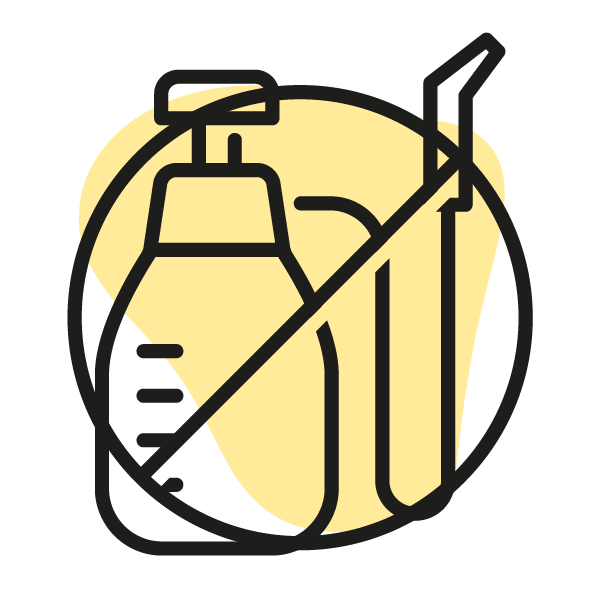 2. Go Chemical-Free for BeesRegardless of which flowers you plant, avoid using pesticides and herbicides. Synthetic pesticides, fertilizers, herbicides, and neonicotinoids are harmful to bees, wreaking havoc on their sensitive systems. A garden can thrive without these harmful chemicals — in fact, one goal of a bee-friendly garden is to build a sustainable ecosystem that keeps itself in check by fostering beneficial populations. If you must use a pesticide, choose a targeted organic product, and always avoid applying pesticides when flowers are blooming or directly to the soil.
2. Go Chemical-Free for BeesRegardless of which flowers you plant, avoid using pesticides and herbicides. Synthetic pesticides, fertilizers, herbicides, and neonicotinoids are harmful to bees, wreaking havoc on their sensitive systems. A garden can thrive without these harmful chemicals — in fact, one goal of a bee-friendly garden is to build a sustainable ecosystem that keeps itself in check by fostering beneficial populations. If you must use a pesticide, choose a targeted organic product, and always avoid applying pesticides when flowers are blooming or directly to the soil. 3. Become a Community ScientistJoin a global movement to collect data on our favorite pollinators! Community science transforms the passion and interest of regular people into data-driven activities that support scientific research. By participating in a community science project, you can provide important insights and local knowledge, which can lead to more relevant and useful research outcomes. Join our “A Bee Or Not a Bee” iNaturalist project, which invites you to document and upload species on iNaturalist, collaborating with naturalists around the world to determine whether the insect buzzing by is a bee, wasp, fly, or other common bee doppelgänger.
3. Become a Community ScientistJoin a global movement to collect data on our favorite pollinators! Community science transforms the passion and interest of regular people into data-driven activities that support scientific research. By participating in a community science project, you can provide important insights and local knowledge, which can lead to more relevant and useful research outcomes. Join our “A Bee Or Not a Bee” iNaturalist project, which invites you to document and upload species on iNaturalist, collaborating with naturalists around the world to determine whether the insect buzzing by is a bee, wasp, fly, or other common bee doppelgänger.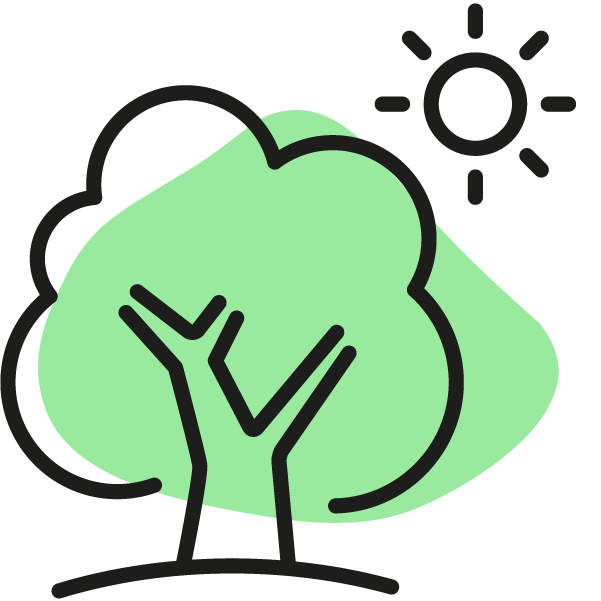 4. Provide Trees for BeesDid you know that bees get most of their nectar from trees? When a tree blooms, it provides hundreds — if not thousands — of blossoms to feed from. Trees are not only a great food source for bees, but also an essential habitat. Tree leaves and resin provide nesting material for bees, while natural wood cavities make excellent shelters. Native trees such as maples, redbuds, and black cherry all attract and support bees. You can help bolster bee food sources and habitat by caring for and planting trees. Trees are also great at sequestering carbon, managing our watersheds, and cooling air temperatures.
4. Provide Trees for BeesDid you know that bees get most of their nectar from trees? When a tree blooms, it provides hundreds — if not thousands — of blossoms to feed from. Trees are not only a great food source for bees, but also an essential habitat. Tree leaves and resin provide nesting material for bees, while natural wood cavities make excellent shelters. Native trees such as maples, redbuds, and black cherry all attract and support bees. You can help bolster bee food sources and habitat by caring for and planting trees. Trees are also great at sequestering carbon, managing our watersheds, and cooling air temperatures. 5. Create a Bee BathBees work up quite a thirst foraging and collecting nectar. Fill a shallow bird bath or bowl with clean water, and arrange pebbles and stones inside so that they break the water’s surface. Bees will land on the stones and pebbles to take a long, refreshing drink.
5. Create a Bee BathBees work up quite a thirst foraging and collecting nectar. Fill a shallow bird bath or bowl with clean water, and arrange pebbles and stones inside so that they break the water’s surface. Bees will land on the stones and pebbles to take a long, refreshing drink.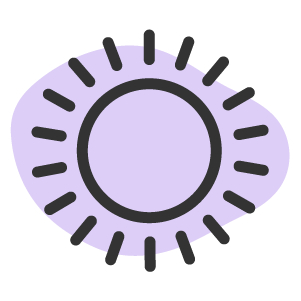 6. Protect Ground Nesting BeesDid you know that 70% of the world’s 20,000 bees — including bumblebees — live underground. There, they build nests and house their young, who overwinter and emerge each spring. Ground nesting bees need bare, mulch-free, well-drained, protected soil in a sunny area to create and access their nests. Leave an untouched section for ground nesting bees in your garden!
6. Protect Ground Nesting BeesDid you know that 70% of the world’s 20,000 bees — including bumblebees — live underground. There, they build nests and house their young, who overwinter and emerge each spring. Ground nesting bees need bare, mulch-free, well-drained, protected soil in a sunny area to create and access their nests. Leave an untouched section for ground nesting bees in your garden!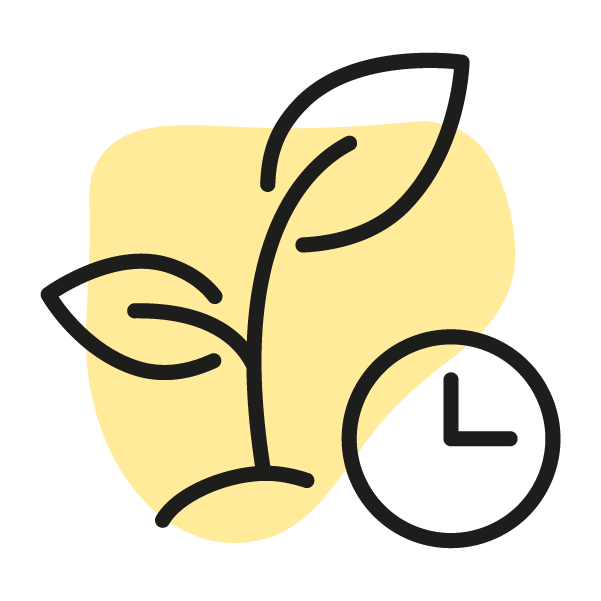 7. Leave Stems Behind30% of bees live: holes inside of trees, logs, or hollow plant stems. Don’t cut those hollow stems, which are valuable bee habitats. A hollow stem may not seem like prime real estate to us, but to mason and other bees, it’s a cozy home in which they may overwinter. Wait until the spring to cut back dead flower stalks, leaving stems 8 to 24 inches high to provide homes for cavity-nesting bees.
7. Leave Stems Behind30% of bees live: holes inside of trees, logs, or hollow plant stems. Don’t cut those hollow stems, which are valuable bee habitats. A hollow stem may not seem like prime real estate to us, but to mason and other bees, it’s a cozy home in which they may overwinter. Wait until the spring to cut back dead flower stalks, leaving stems 8 to 24 inches high to provide homes for cavity-nesting bees.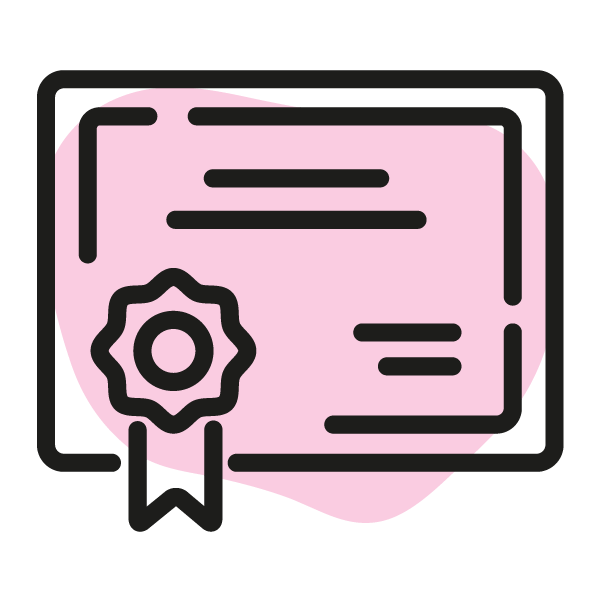 8. Teach Tomorrow’s Bee StewardsInspire the next generation of eco citizens with guides, lessons, and activities to get them buzzed about bees! Educators can use our collection of free resources to bring nature and ecology into the classroom — and the hearts of children everywhere.
8. Teach Tomorrow’s Bee StewardsInspire the next generation of eco citizens with guides, lessons, and activities to get them buzzed about bees! Educators can use our collection of free resources to bring nature and ecology into the classroom — and the hearts of children everywhere.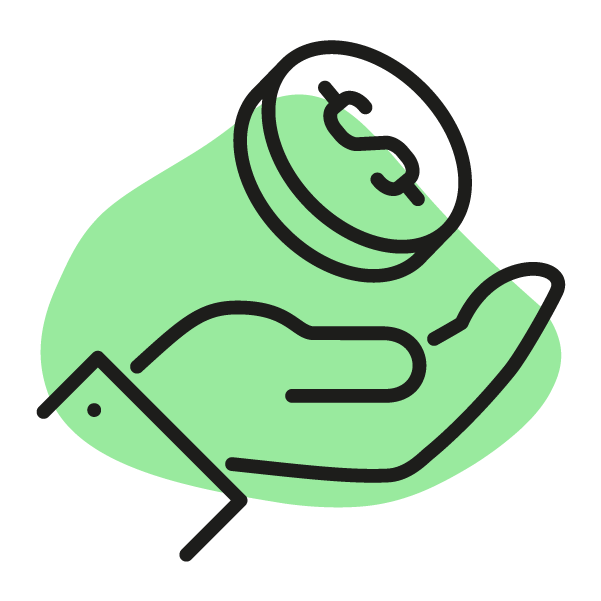 9. Host a FundraiserPeer-to-Peer fundraising is a fantastic way to spread the mission of The Bee Conservancy and empower your community to help raise money for our impactful programs. With the help of tools from Fundraise Up, you can share your personal fundraising page on social media and with friends and family. It’s an easy, fun way to make a serious impact.
9. Host a FundraiserPeer-to-Peer fundraising is a fantastic way to spread the mission of The Bee Conservancy and empower your community to help raise money for our impactful programs. With the help of tools from Fundraise Up, you can share your personal fundraising page on social media and with friends and family. It’s an easy, fun way to make a serious impact.
Start your own fundraiser today! 10. Support Local Beekeepers and OrganizationsLocal beekeepers work hard to nurture their bees and the local community. The easiest way to show your appreciation is to buy locally-made honey and beeswax products. Many beekeepers use products from their hives to create soaps, lotions, and beeswax candles. Plus, local honey is not only delicious — it is made from local flora and may help with seasonal allergies! You can also give time, resources, and monetary donations to local beekeeping societies and environmental groups to help their programs grow.
10. Support Local Beekeepers and OrganizationsLocal beekeepers work hard to nurture their bees and the local community. The easiest way to show your appreciation is to buy locally-made honey and beeswax products. Many beekeepers use products from their hives to create soaps, lotions, and beeswax candles. Plus, local honey is not only delicious — it is made from local flora and may help with seasonal allergies! You can also give time, resources, and monetary donations to local beekeeping societies and environmental groups to help their programs grow.-
 Tai Chen 4/30/2024 6:49 AMThere's a shrub in my front yard that's a wasp magnet. While I do appreciate pollinators, I think the shrub needs to be trimmed down a little.
Tai Chen 4/30/2024 6:49 AMThere's a shrub in my front yard that's a wasp magnet. While I do appreciate pollinators, I think the shrub needs to be trimmed down a little.
-
-
Linda Miller 4/26/2024 11:54 AMPlanting trees in honor of Arbor Day is a longstanding American tradition that dates back to 1872, and while climate and landscape factors have changed since the holiday's inception, the motivation remains crucial."There has never been a more important time to be planting trees than right now," Dan Lambe, chief executive of the Arbor Day Foundation, told ABC News ahead of the annual holiday.
This ancient Oak tree, a local natural landmark, is located on John's Island, just outside of Charleston, S.C.STOCK IMAGE/Getty Images"As we look at our changing climate and extreme heat, as we look at the challenges in our cities and towns, planting a tree on Arbor Day is one of the simple things people can do to be a part of a solution for their neighborhood, for their community and for the planet," Lambe said.
In one year, a mature tree can absorb half a Metric ton of carbon dioxide equivalent from the atmosphere, according to the National Forest Foundation.
-
 Tai Chen 4/26/2024 12:47 PMI think that tree needs grooming based on how many branches are touching the ground. I'm only joking. I think it's actually a really cool tree and would love to perch on one of the lower limbs.
Tai Chen 4/26/2024 12:47 PMI think that tree needs grooming based on how many branches are touching the ground. I'm only joking. I think it's actually a really cool tree and would love to perch on one of the lower limbs.
-
-
Linda Miller 4/26/2024 7:42 AMSupport Local Beekeepers and OrganizationsLocal beekeepers work hard to nurture their bees and the local community. The easiest way to show your appreciation is to buy locally-made honey and beeswax products. Many beekeepers use products from their hives to create soaps, lotions, and beeswax candles. Plus, local honey is not only delicious — it is made from local flora and may help with seasonal allergies! You can also give time, resources, and monetary donations to local beekeeping societies and environmental groups to help their programs grow. -
Linda Miller 4/25/2024 5:09 AMBecome a Community ScientistJoin a global movement to collect data on our favorite pollinators! Community science transforms the passion and interest of regular people into data-driven activities that support scientific research. By participating in a community science project, you can provide important insights and local knowledge, which can lead to more relevant and useful research outcomes. Join our “A Bee Or Not a Bee” iNaturalist project, which invites you to document and upload species on iNaturalist, collaborating with naturalists around the world to determine whether the insect buzzing by is a bee, wasp, fly, or other common bee doppelgänger. -
Linda Miller 4/24/2024 5:08 AMTeach Tomorrow’s Bee StewardsInspire the next generation of eco citizens with guides, lessons, and activities to get them buzzed about bees! Educators can use our collection of free resources to bring nature and ecology into the classroom — and the hearts of children everywhere. -
Linda Miller 4/23/2024 5:22 AM- Purchase locally grown or USA produced honey. There have been reports that some imported honey contains cane or corn-based sugar. While the USDA tests imported honey, they cannot test every batch. Make sure you are buying true bee-friendly honey by purchasing only USA produced honey.
-
Linda Miller 4/22/2024 6:26 AMTeach Tomorrow’s Bee StewardsInspire the next generation of eco citizens with guides, lessons, and activities to get them buzzed about bees! Educators can use our collection of free resources to bring nature and ecology into the classroom — and the hearts of children everywhere. -
Linda Miller 4/19/2024 5:25 AMLeave Stems Behind30% of bees live: holes inside of trees, logs, or hollow plant stems. Don’t cut those hollow stems, which are valuable bee habitats. A hollow stem may not seem like prime real estate to us, but to mason and other bees, it’s a cozy home in which they may overwinter. Wait until the spring to cut back dead flower stalks, leaving stems 8 to 24 inches high to provide homes for cavity-nesting bees. -
Linda Miller 4/18/2024 4:55 AMProtect Ground Nesting BeesDid you know that 70% of the world’s 20,000 bees — including bumblebees — live underground. There, they build nests and house their young, who overwinter and emerge each spring. Ground nesting bees need bare, mulch-free, well-drained, protected soil in a sunny area to create and access their nests. Leave an untouched section for ground nesting bees in your garden! -
Linda Miller 4/17/2024 12:51 PMSome bumblebees can survive underwater for up to a week, new study shows
An experimental error led a team of scientists researching bumblebees to make a startling discovery: the insects’ remarkable ability to survive underwater for up to a week.
A study published in the journal Biology Letters on Wednesday described how scientists from Canada’s University of Guelph accidentally submerged hibernating queen common eastern bumblebees in water, and were astonished to find that they had survived.
-
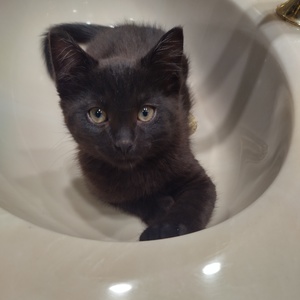 Stacey Whala 4/24/2024 6:41 AMI read this article online - pretty wild!
Stacey Whala 4/24/2024 6:41 AMI read this article online - pretty wild!
-